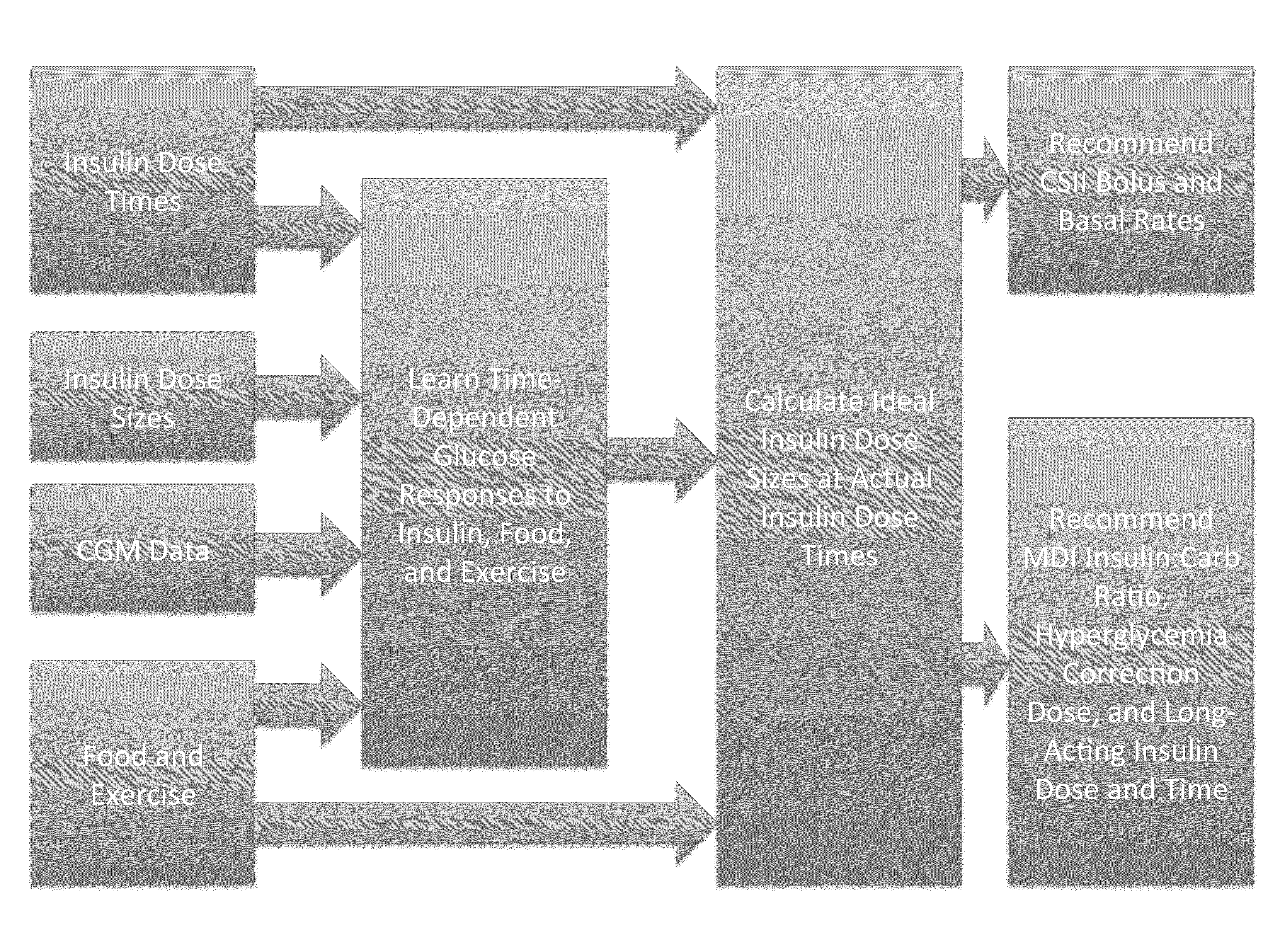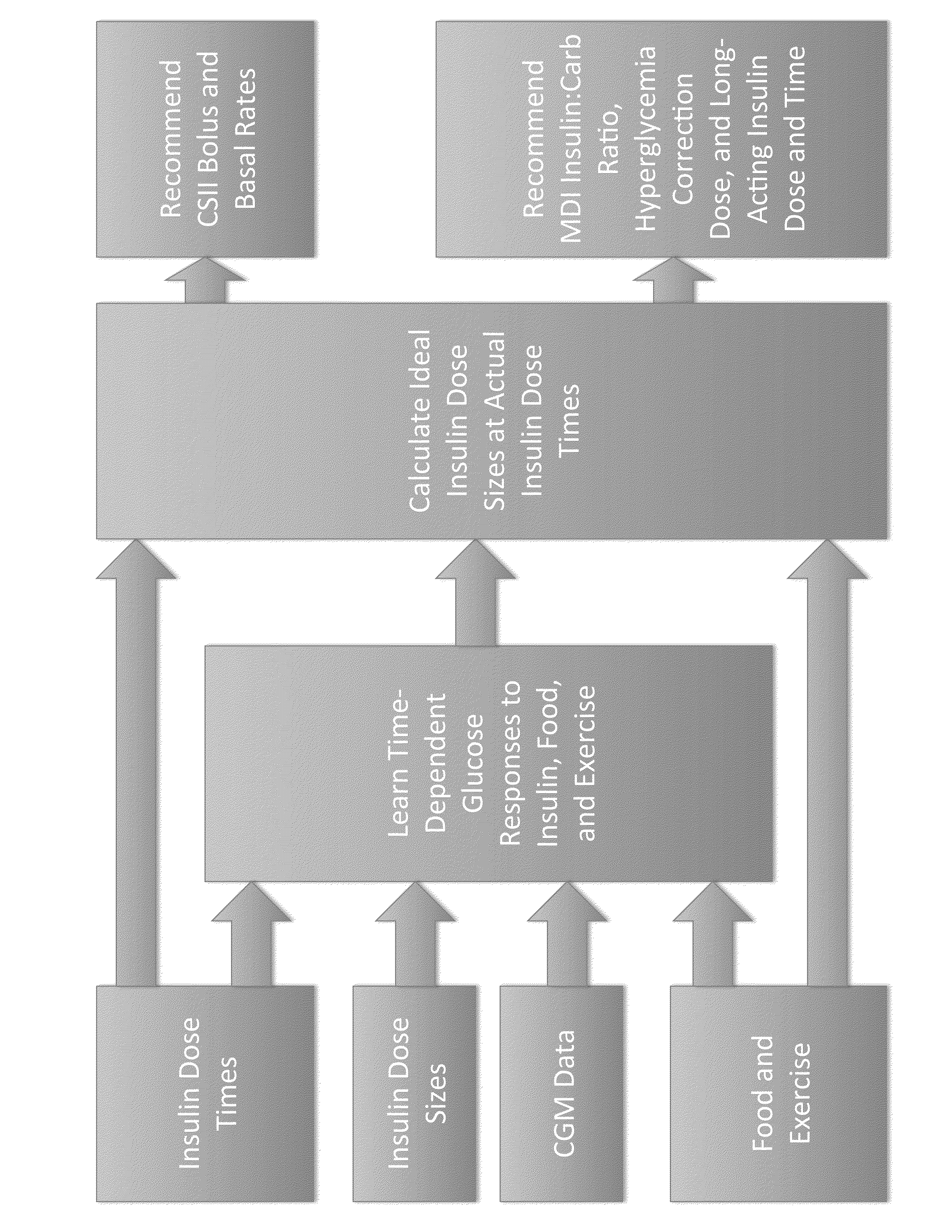Method to Determine Individualized Insulin Sensitivity and Optimal Insulin Dose by Linear Regression
a linear regression and insulin sensitivity technology, applied in probabilistic networks, instruments, pulse techniques, etc., can solve the problems of severe health problems and premature death, incorrect when to take it, and the correct dose and type of insulin to take,
- Summary
- Abstract
- Description
- Claims
- Application Information
AI Technical Summary
Benefits of technology
Problems solved by technology
Method used
Image
Examples
Embodiment Construction
[0014]Step 1 of the method linearly regresses changes in glucose over possibly overlapping time intervals onto the following equation:
Δgi,j=(EGP0-p*gi)*Δti,j+RGC+∑j=1Nshortθshort,jSj+∑j=1Nlongθlong,jLj+∑j=1Ncarbθcarb,jCj
where,[0015]gi is the ith glucose measurement in time,[0016]Δgi,j=gi+j−gi,[0017]Δti,j=ti+j−ti,[0018]EGP0 is endogenous glucose production extrapolated to 0 glucose, a fit parameter; p is suppression of endogenous glucose production, a fitting parameter;[0019]RGC=A(gi−gRGC) if g>gRGC and RGC=0 otherwise, represents renal glucose clearance where A and gRGC—the renal glucose clearance threshold—are fit parameters;[0020]θshort,j are responses to short-acting insulin doses Sj administered j time periods before ti, where each time period could be 30 to 60 minutes, are fit parameters;[0021]θlong,j are responses to long-acting insulin doses Lj administered j time periods before ti, where each time period could be 30 to 60 minutes, are fit parameters; and[0022]θcarb,j are res...
PUM
 Login to View More
Login to View More Abstract
Description
Claims
Application Information
 Login to View More
Login to View More - R&D
- Intellectual Property
- Life Sciences
- Materials
- Tech Scout
- Unparalleled Data Quality
- Higher Quality Content
- 60% Fewer Hallucinations
Browse by: Latest US Patents, China's latest patents, Technical Efficacy Thesaurus, Application Domain, Technology Topic, Popular Technical Reports.
© 2025 PatSnap. All rights reserved.Legal|Privacy policy|Modern Slavery Act Transparency Statement|Sitemap|About US| Contact US: help@patsnap.com



